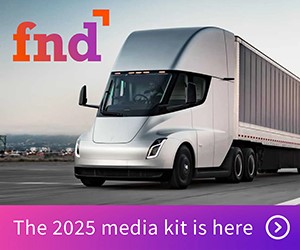CED Report Reveals Severity of America’s Deteriorating Infrastructure
Provides Modernization Plan for Public and Private Sectors
Neglected for too long, America’s severe infrastructure needs must finally be placed at the top of the US policy agenda. To that end, the Committee for Economic Development of The Conference Board (CED) has released a new, comprehensive report with several policy recommendations to address this building crisis.
From highways and bridges to air traffic control and water resources, and from energy production to broadband internet access, nearly every facet of the country’s infrastructure is below global standards and deteriorating daily. The devastating impact of COVID-19 has not only underscored the shortfalls in the system – for example, by highlighting the inequities in access to reliable, high-speed internet. The pandemic has also increased the urgency of raising America’s global competitiveness.
A US Infrastructure Plan: Building for the Long Haul lays out principles for closing the infrastructure gap and details public and private sector policy recommendations to return the US to world-class status.
“Modernizing our infrastructure is one of the few issues that enjoys broad bipartisan support, so both sides can work together to comprehensively address this glaring issue,” said Lori Esposito Murray, President of CED. “The large number of areas that fall under the infrastructure rubric demonstrates its importance to our economy. A sharp focus on its role and key issues can lead the nation toward faster economic growth and job creation, environmental protection, equality of opportunity, shared prosperity, and eventual public savings.”
Not only is infrastructure a bipartisan issue, but it also crosses public-private lines in unexpected ways. While government is sometimes believed to be the source of all infrastructure weaknesses, private-sector responsibility is more salient in some areas.
As the report details, reasoned principles to close the substantial US infrastructure gap include:
- Improve infrastructure planning and decision making through cost-benefit analysis and increased coordination. Given the substantial role of federal financing in many state and local infrastructure projects, and the regional, multi-jurisdiction impacts of infrastructure, smart project selection requires substantial coordination in long-term design and planning. That includes bringing together private and public stakeholders across different levels of government and political or geographic boundaries. Improved project selection would reflect data-driven management of both existing and planned infrastructure assets, identifying the true needs, potential benefits, and life-cycle costs—and comparing the relative net value of maintenance or upgrades to existing infrastructure against the construction of new and additional capacity.
- Encourage and facilitate innovation. As technology advances, Federal infrastructure policy must respond, looking beyond particular categories of infrastructure, past allocation formulas, and rules of thumb. Instead, it must choose assets and solutions that best meet a community’s or region’s particular needs, recognizing that the best choices will change with the changing times. For example, dedicated funding for roads or rails will lead to rigid road- or rail-based solutions in proportion to the funding provided last year or 10 years ago, even if a different balance or approach—perhaps one not yet recognized, or more emphasis on data infrastructure—could better achieve the region’s goals.
- Modernize and streamline regulation. CED has consistently advocated “smart regulation,” subjecting new regulations to cost-benefit analysis and reviewing existing regulations for continuing cost-effectiveness. A smart regulation approach could reduce delays and cut through multiple layers of jurisdiction to ensure that review and permitting of projects address all important concerns, and that net benefits are maximized over time at all levels of government.
- Achieve appropriate private-sector involvement in public infrastructure choices. Much of the nation’s infrastructure investment is in the nature of public goods, which are (or should be, in the public interest) available to all without restriction. However, in some instances, the services provided through infrastructure can be priced, and should be provided on the basis of willingness to pay. In those instances, well-designed public-private partnerships (PPPs) can foster efficiency, innovation, and long-term performance while transferring certain financial risks—like cost overruns and delays—from the public to private investors.
- Explore alternative approaches for utilizing private investment resources. Private-sector funding, particularly through tax-exempt municipal debt issuances, is central to current US infrastructure financing. However, creative financing mechanisms like Transportation Infrastructure Finance and Innovation Act assistance and the currently lapsed Build America Bonds program have encouraged efficient upfront utilization of private investment resources, including by allowing more nongovernmental investors to participate in infrastructure project financing. Policymakers should explore, evaluate, and support such creative alternatives.
- Incorporate user fees to gauge the value of, and finance, infrastructure projects. “User-pay” models can not only promote efficient project choices and achieve sustainable financing, but also ascribe the cost to the people who most directly benefit. Where appropriate, user-pay models yield better and fairer outcomes.
- Incorporate climate risk into evaluations of potential infrastructure investments. Changes in climate pose potentially sizable risks to the apparent value propositions of long-term assets, even though the timing and severity of those risks are uncertain. Serious cost-benefit analysis must include preparation for climate-related stresses or hazards—including more extreme weather events, such as increased flood, wildfire, and drought risks.
The entire report – the latest in a series of CED Solutions Briefs – can be accessed here. Contact the Committee for Economic Development of The Conference Board for inquiries, including interviews.
Category: Driver Stuff, Featured, General Update, News, Safety











